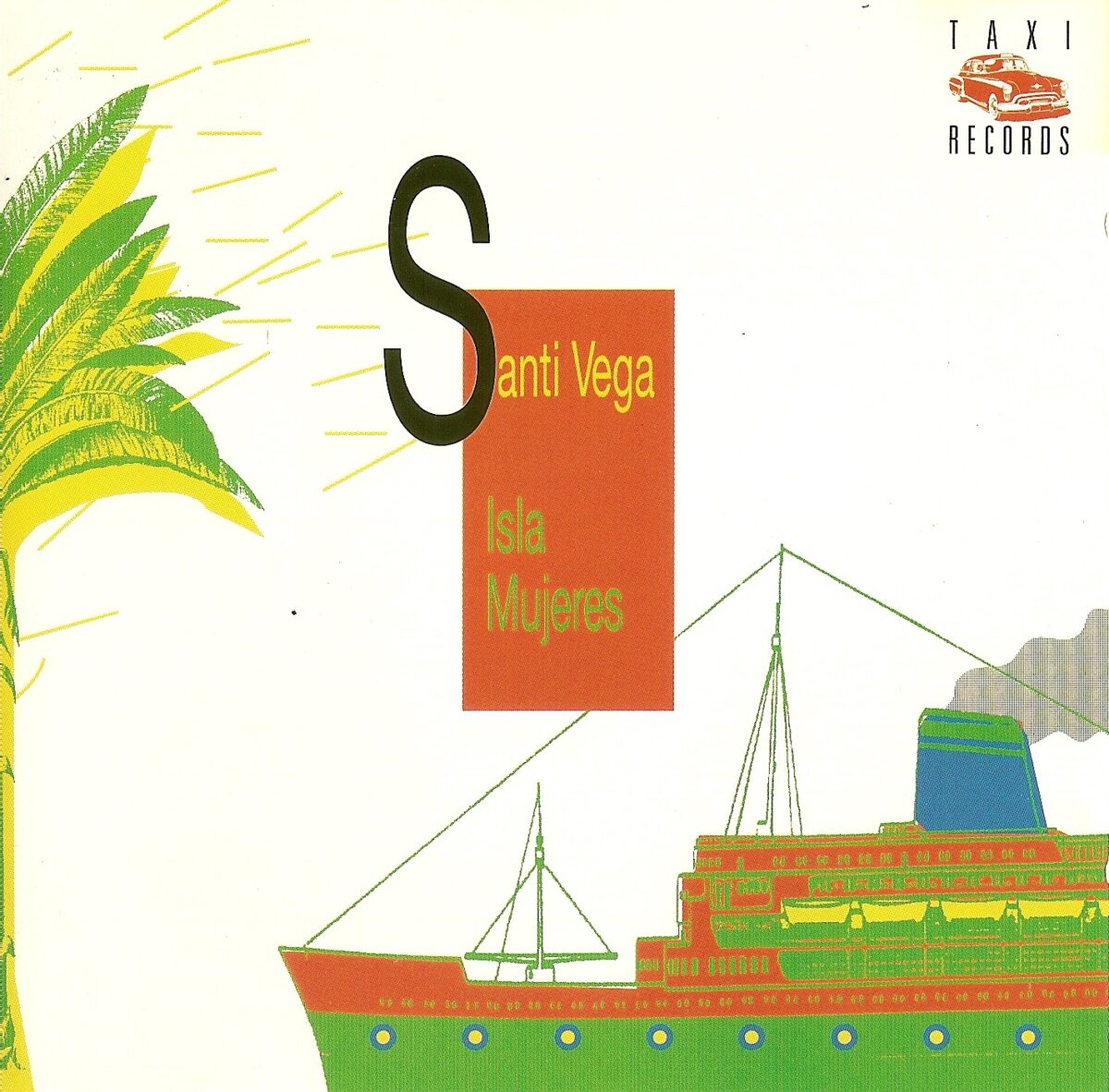
Traveling. That’s all I can think about now. I won’t bore you with too much autobiography but life has been quite stressful lately. So, when I put on music – or when I share music – I want it to take me (or us) somewhere. And lately, its cardinal points have taken me to the music of Santi Vega…right to his Isla Mujeres.
Santi Vega is that rare prodigy that isn’t prodigious in just one instrument. Born and raised in Vitoria, the Basque capital of that autonomous region of Spain, Santi wowed his parents and family by picking up piano, flute, and cello at a very precocious age. However, rather than follow the path of a classical musician, Santi fell in love with the music of Neil Young and then transitioned into trying to mix Spanish folk tradition into the music of the conservatory. By the time he was old enough to do so, he realized he might have to look outside of Spain to expand his vision and musical taste.

Santi would be in his twenties when he’d travel to America to study at the prestigious Berklee College of Music (much like one Toshifumi Hinata…). In Boston, Santi would study jazz, electronic composition and film scoring. When he headed back home, he’d aim his metaphorical musical sail to Madrid – then the heart of Spain’s “New Age” or contemporary experimental scene.
It was in that same bleeding-edge milieu where Suso Saiz, Javier Paxariño, and Finis Africae brethren like Alberto Iglesias were creating, that other voices like Eduardo Laguillo were attempting to chart their own course with New Spanish music. Under the short-lived Madrid-based Taxi Records, artists like Eduardo and Antoni-Olaf Sabater explored combining esoteric jazz with minimalism and world music. As for Santi, who signed with Taxi, it was in the early ‘90s that he fell in love with the music of Pat Metheny and the heartfelt ambiance, ambient compositions of Lyle Mays. This is what he wanted to explore and to do so Santi knew he had to convene a group of simpatico musicians to understand what his idea of new world music was.

Perhaps inspired by sceneries more than motifs, in 1991, from June through December, Santi convened to Madrid Red Led Studios with (guitarist) Josep Salvador, (bassist) Justo Lera, (drummer) Vicente Climent, and (percussionist) Luis Dulzaides, to form the Santi Vega Group and put ideas to tape. Together with fellow Berklee alumni, Eva Gancedo, Santi tried to build a bridge of creating electronic soundscapes that were spread out, influenced by the farthest points of the world. The end result was a distinct album that belonged in the same pantheon as the best New Spanish Music but that set its sights, stylistically, a bit elsewhere than the rest.
Isla Mujeres takes its name from that last Mexican island that bleeds into the Caribbean reaches of Caribbean waters and Cuba. It’s deriving inspiration from multi-faceted ethnic music where Spanish toes had placed a foothold in, that drove the sound of Santi’s music. The title track’s ambient latin jazz is a clear cut example of the spectral uplifting music Santi wanted to create.
Personal favorites of mine like “Lyle” make obvious hat tip to the group’s inspiration but shift that influence into realms that are spirited, theirs. “Danza”, uses pre-Columbian ethno-music as a launching point for hypnotic digressions from those realms. “En Barco”, featuring a mix of acoustic and electronic percussion arranged by Santi, exposes his rhythmic talents with gorgeous “melodics” reminiscent of the Antilles but laced with a certain haunting quality that’s hard to pinpoint (as they’re just that much more ephemeral). Throughout the album we just get to hear shifts in modalities and emotional frames that express just how dialed-in the whole group was to vamp in the heart (and not only in the mind).
Somehow, Isla Mujeres, also finds time to explore the musics of the Mediterranean and Africa. “No Me Acostumbraré” (featuring the vocal talents of Santi himself) presents some of that gorgeous deeply romantic Spanish ambient pop balladry that was haunting other albums from that time. Hearty duos like “Kruger Park” translate the embers of South African music into ashes of a different kind of polyrhythmic musical emotional motion.

Rather than expend any more of your time reintroducing you to another forgotten gem of New Spanish Music, sometimes it’s best to find your space to travel (without moving). Something easily accomplished by hitching a ride below…
